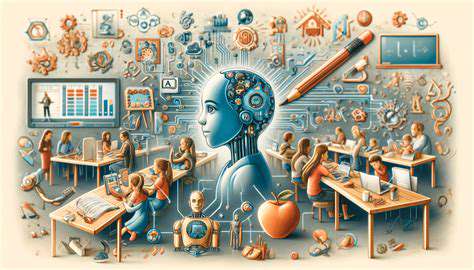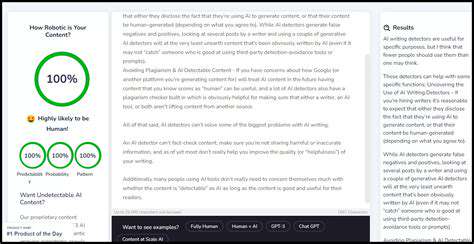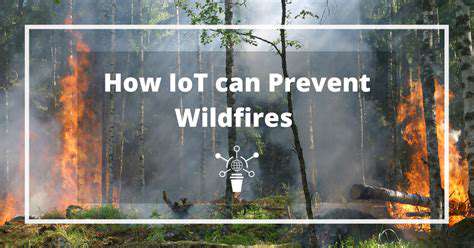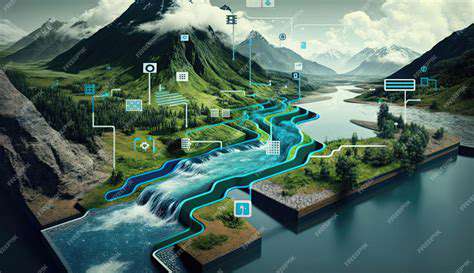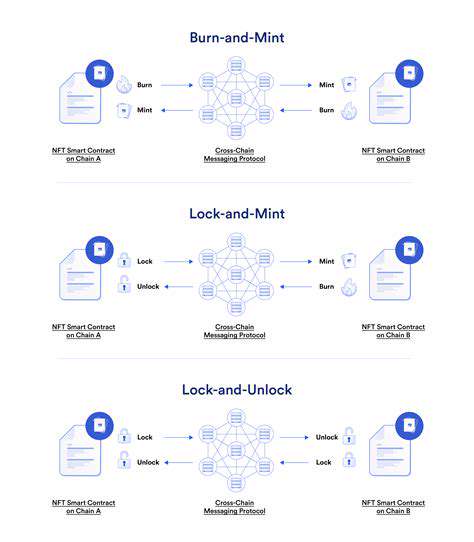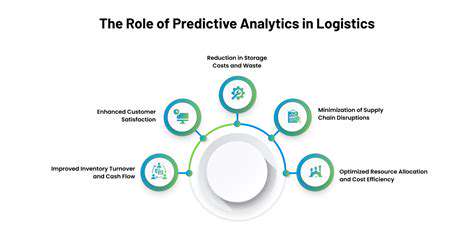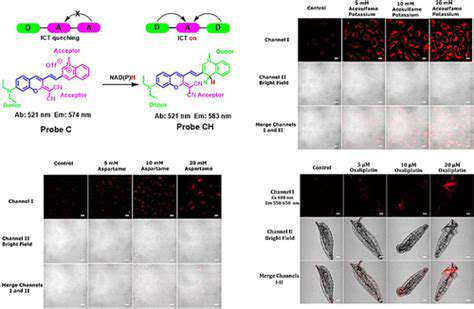IoT's Role in Enhancing Grid Efficiency
Improving Grid Monitoring and Control
The smart grid revolution has transformed how we monitor and manage energy distribution. By embedding IoT devices throughout the infrastructure, operators gain real-time visibility into grid conditions, including voltage fluctuations, current flow patterns, and consumption trends. This granular data enables utilities to shift from reactive repairs to predictive maintenance strategies, significantly reducing outage occurrences. Thousands of strategically positioned sensors create a comprehensive health dashboard for the entire network, allowing technicians to spot and address potential problems before they escalate.
Modern control systems leverage IoT capabilities to automatically adjust grid parameters in response to changing conditions. Smart meters communicate consumption data continuously, enabling dynamic balancing of supply and demand across the network. This real-time responsiveness proves particularly valuable during peak demand periods, when traditional systems might struggle to maintain stability. The result is a more efficient grid that minimizes energy waste while ensuring consistent service reliability.
Optimizing Energy Generation and Distribution
The energy sector faces growing pressure to incorporate renewable sources effectively. IoT solutions provide critical insights that help balance intermittent renewable generation with traditional power sources. By continuously tracking output from solar arrays and wind farms, grid operators can make informed decisions about energy mixing. This capability becomes increasingly important as nations work to meet ambitious carbon reduction targets.
Intelligent distribution networks use IoT data to redirect power flows dynamically based on immediate demand patterns. This adaptive approach reduces transmission losses significantly compared to traditional fixed-distribution models. For regions with geographically dispersed generation assets, these smart routing capabilities enable more efficient utilization of available resources while maintaining service reliability across vast territories.
Predictive Maintenance and Fault Detection
Embedded sensors in critical grid components like transformers and substations generate continuous performance data. Advanced analytics transform this information into predictive maintenance schedules, allowing utilities to address wear-and-tear before it causes failures. This proactive approach has demonstrated 30-40% reductions in unplanned outages according to industry studies, while simultaneously lowering maintenance costs through better resource planning.
Beyond equipment monitoring, IoT systems excel at detecting subtle anomalies that might indicate developing faults. Early warning algorithms can identify potential issues days or weeks before they would become apparent through traditional monitoring. This lead time allows for scheduled repairs during low-demand periods, minimizing customer impact while maintaining system integrity.
Enhanced Customer Engagement and Energy Management
Modern smart meters provide households with unprecedented visibility into their consumption patterns through detailed usage reports and real-time monitoring apps. Studies show consumers who access this data typically reduce consumption by 5-15% simply through increased awareness and minor behavioral adjustments. Many utilities complement this data with personalized efficiency recommendations, helping customers identify the most effective ways to lower their bills.
From the utility perspective, aggregated smart meter data reveals valuable insights about consumption trends across different demographics and regions. This information guides infrastructure investments and helps shape more effective demand response programs. The resulting two-way communication between providers and consumers fosters a collaborative approach to energy management that benefits all stakeholders.
Integrating Renewable Energy Sources: A Smart Approach
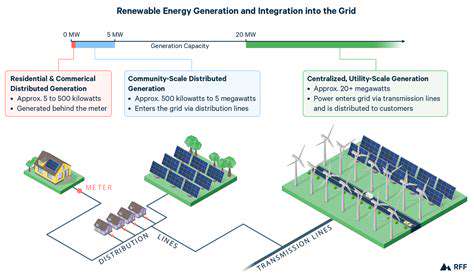
Harnessing Solar Power
Photovoltaic technology has evolved dramatically in recent years, with modern panels converting sunlight to electricity at efficiencies that were unimaginable a decade ago. The plunging cost of solar installations has made this technology accessible to homeowners and businesses alike, driving widespread adoption even without subsidies. Rooftop solar arrays now contribute significantly to urban energy mixes while reducing strain on traditional grid infrastructure.
Utility-scale solar farms continue to expand globally, with some covering thousands of acres. These installations benefit from advanced tracking systems that follow the sun's path across the sky, boosting output by 20-30% compared to fixed arrays. The combination of distributed rooftop generation and centralized solar farms creates a resilient hybrid model that can adapt to varying weather conditions and demand patterns.
Exploring Wind Energy Potential
Modern wind turbines represent a triumph of engineering, with some land-based models now exceeding 200 meters in height and generating enough electricity to power thousands of homes. The shift toward larger, more efficient turbines has driven down the levelized cost of wind energy, making it competitive with fossil fuels in many markets. Advanced predictive maintenance systems keep these complex machines operating at peak efficiency while minimizing downtime.
Offshore wind development has gained momentum as coastal nations seek to capitalize on stronger, more consistent ocean winds. Floating turbine technology now enables wind farm development in deep waters, dramatically expanding suitable locations beyond traditional shallow coastal areas. These projects often benefit from higher capacity factors than their land-based counterparts, providing more consistent renewable generation to support grid stability.
Investing in Geothermal Energy
While geothermal accounts for a small portion of global renewable capacity, its potential remains largely untapped. Enhanced geothermal systems (EGS) technology continues to advance, potentially unlocking vast resources previously considered inaccessible. Unlike solar and wind, geothermal plants provide consistent baseload power unaffected by weather conditions or time of day.
Regions with significant geothermal resources can achieve remarkable energy independence, as demonstrated by Iceland's near-total reliance on renewable geothermal and hydroelectric power. The development of binary cycle power plants has expanded viable geothermal locations beyond traditional volcanic regions, making this technology accessible to more countries seeking clean, reliable energy sources.
Optimizing Energy Storage Solutions
The renewable energy transition faces its greatest challenge in addressing the intermittency of solar and wind generation. Utility-scale battery installations have emerged as a key solution, with lithium-ion systems now capable of storing hundreds of megawatt-hours. These facilities can smooth out short-term fluctuations while newer technologies like flow batteries target longer-duration storage needs.
Innovative hybrid systems are combining multiple storage technologies to maximize flexibility and cost-effectiveness. Pumped hydro storage continues to provide the majority of global energy storage capacity, while compressed air and thermal storage solutions offer alternative approaches for specific applications. As these technologies mature, they enable higher penetration of renewable sources while maintaining grid reliability.
Improving Reliability and Resilience with Predictive Maintenance
Predictive Maintenance for Enhanced Grid Stability
Modern predictive maintenance systems combine sensor data with machine learning to forecast equipment failures with remarkable accuracy. These systems analyze multiple variables including vibration patterns, thermal signatures, and performance trends to identify components showing early signs of degradation. Utilities implementing these solutions report 40-50% reductions in unexpected failures, translating to improved service reliability and lower operational costs.
Data-Driven Insights for Proactive Maintenance
The smart grid generates petabytes of operational data from thousands of monitoring points. Advanced analytics platforms process this information to detect subtle anomalies that might indicate developing issues. These systems can correlate data across multiple assets, identifying systemic problems that might escape traditional monitoring approaches. The resulting insights enable utilities to transition from fixed maintenance schedules to condition-based interventions optimized for each piece of equipment.
Improved Efficiency and Reduced Costs
Predictive maintenance delivers financial benefits through multiple channels. Beyond preventing costly emergency repairs, these systems optimize spare parts inventory by predicting exactly which components will need replacement and when. Maintenance crews can be deployed more efficiently, with work scheduled during periods of low demand to minimize service impacts. Industry analysts estimate predictive maintenance programs typically achieve ROI within 12-18 months through these combined efficiencies.
Proactive Management of Grid-Scale Failures
Modern grid analytics can model cascading failure scenarios based on real-time conditions, allowing operators to take preventive action before localized issues escalate. These systems monitor the entire network's interdependencies, identifying vulnerable points that could trigger widespread outages if left unaddressed. By intervening at these critical junctures, utilities can maintain system integrity even during extreme weather events or equipment malfunctions.
Enhanced Grid Resilience through Advanced Analytics
The latest generation of grid analytics platforms incorporate machine learning models trained on decades of operational data. These systems can identify emerging patterns that human operators might miss, such as gradual equipment degradation or subtle changes in load patterns. This analytical depth enables utilities to strengthen weak points before they become problems, creating a more resilient infrastructure capable of withstanding diverse challenges.
Real-time Monitoring and Fault Detection
High-speed sensor networks combined with edge computing capabilities now enable true real-time grid monitoring. Intelligent algorithms process data streams locally at substations and switching stations, detecting anomalies within milliseconds. This immediate detection allows for automatic re-routing of power flows around developing faults, often preventing outages entirely. The combination of localized processing and centralized analytics creates a comprehensive monitoring solution that improves both reliability and response times.
Demand Response and Customer Engagement: A Two-Way Street
Demand Response Programs: Empowering Customers
Modern demand response initiatives have evolved beyond simple peak pricing schemes. Today's programs leverage smart home technologies to automate energy adjustments based on real-time grid conditions. Connected thermostats, water heaters, and appliances can respond to price signals or grid needs without compromising consumer comfort. These automated solutions have increased participation rates significantly, as they require minimal customer effort while delivering measurable benefits to both participants and the grid.
Innovative program designs now incorporate behavioral science principles to maximize engagement. Gamification elements, social comparisons, and personalized savings projections help consumers understand their impact on the broader energy system. Some utilities have successfully implemented community-based challenges that reward groups for collective energy reductions, fostering both competition and cooperation among participants.
Customer Engagement: Building Trust and Understanding
Effective energy engagement requires moving beyond transactional relationships to create ongoing dialogues with consumers. Modern utilities employ multiple communication channels - from mobile apps to community workshops - to educate customers about energy systems and conservation strategies. Personalized energy reports that compare usage to similar households have proven particularly effective at motivating behavior change.
The most successful engagement strategies recognize that different customer segments require tailored approaches. Tech-savvy consumers may prefer self-service portals with detailed analytics, while others respond better to simple, actionable tips delivered through traditional channels. Utilities that segment their customer base and develop appropriate messaging for each group consistently achieve higher satisfaction and participation rates in energy programs.
Looking ahead, emerging technologies like augmented reality may transform how consumers interact with energy data. Imagine pointing a smartphone at an appliance to see its real-time consumption and receive personalized efficiency recommendations. Such innovations could make energy management more intuitive and engaging for all demographics, further strengthening the partnership between utilities and their customers.
